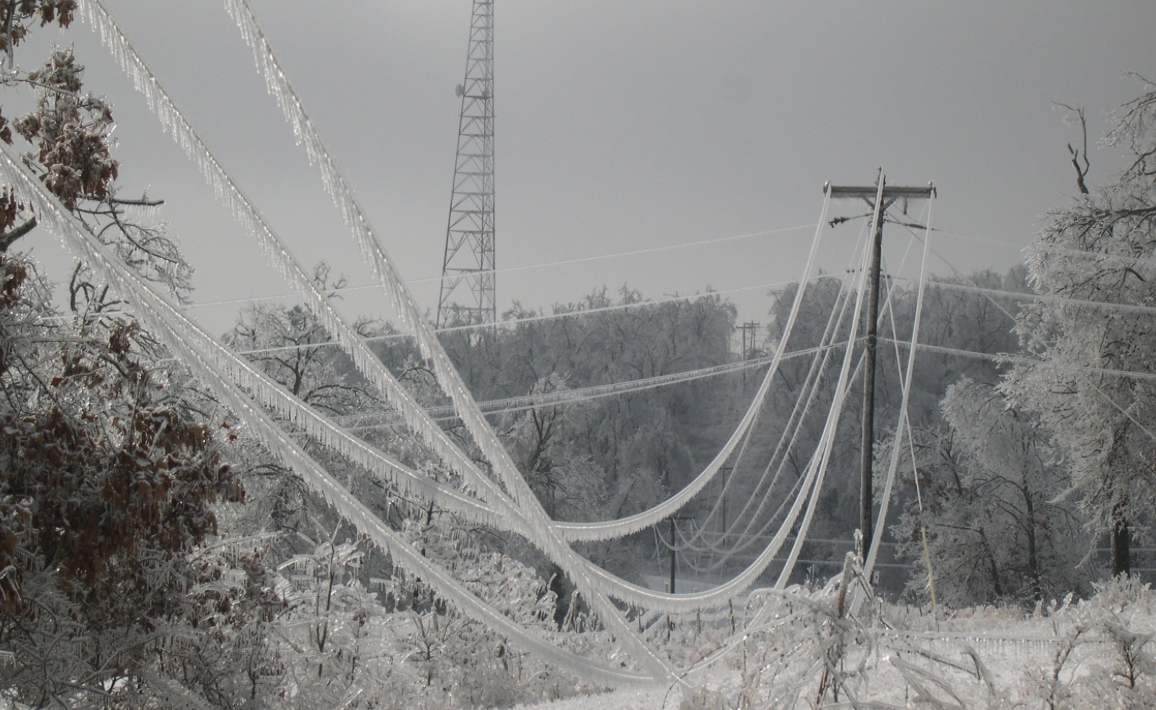Everyone knows that Texas suffered prolonged power outages earlier this year. Those outages were caused primarily by unexpectedly cold weather that froze up electric generators and the natural gas infrastructure that supplies fuel to electric generators. No one had to call in Sherlock Holmes to determine that the tragedy could have been prevented if the generators and natural gas supply had been properly winterized. The generators were not winterized because Texas did not require it, preferring to rely on "market" to encourage generators to winterize on their own. The Texas blackouts did not happen because transmission lines failed.
However, Texageddon is now being used by the federal government as an excuse to build a whole bunch of new transmission.
The White House cites Texas’ deadly power outages as a key selling point for a $2.3 trillion infrastructure package, leaving a clear – but potentially misleading – implication that Texas would get the billions needed to avert such catastrophes in the future.
As Energy Secretary Jennifer Granholm put it while pitching the plan at a White House briefing last week: “After what happened in Texas, can anybody really doubt that electricity and the electric grid is part of the foundation of who we are as a nation? And we need to invest in it if we want to make sure power keeps coming to our homes.”
For a president aiming to sell a gargantuan stimulus plan, the timing has been fortuitous.
“As you saw in Texas and elsewhere, our electric and power grids are vulnerable to storms, catastrophic failures, and security lapses, with tragic results. My American Jobs Plan will put hundreds of thousands of people to work… laying thousands of miles of transmission line; building a modern, resilient, and fully clean grid,” Biden said when he unveiled the plan March 31 at a carpenters training center in Pittsburgh.
First of all, Texas maintains an independent grid in order to avoid federal meddling in its electricity supply. It is not connected to other states via high voltage transmission, and because it is not connected, it avoids federal regulation. There is absolutely no way to connect any new transmission to Texas under the current scenario and it is questionable whether the federal government can force Texas to connect. As the article puts it:
Texas can’t import that many electrons even in a crisis, thanks to decades of isolation from the two huge grids that span the rest of the country.
Ending that grid independence is a touchy subject in Texas. Biden’s plan doesn’t broach the topic.
In terms of keeping the lights on the next time Texas is walloped by an arctic blast, the most relevant idea is building 20 gigawatts of high-voltage power lines to provide “a more resilient electric transmission system,” using tax credits to leverage tens of billions in private investment.
That’s an expansion of capacity somewhere, not a promise to insulate Texas generating plants.
And 20 GW is less than half of what Texas lost during the February storm.
Of course it's not about giving merchant Texas generators federal money to winterize their plants. Why should everyone else pay the cost of greedy Texas generator failures? The generators made plenty of money, they just didn't choose to put it back into their systems in order to winterize. The generators simply didn't CARE if that happened... they would only lose a few days revenue, and the likelihood of this happening was pretty much "once in a lifetime."
Next, a bailout for Texas’ grid would hit resistance from states where utilities and their customers – not federal taxpayers – already made the investments needed to keep the juice on when the mercury plummets.
“Most Americans would not want to pay a higher tax if the ratepayers in Texas itself don’t want to pay,” said Geddes, the Cornell professor of policy analysis and management.
“The resilience of the grid should be borne by the user,” he argued. “If you pay for my bread, or my electricity, I might not be so careful about how much I consume.”
Historically, infrastructure of all types relies on user fees. Gasoline taxes of 18.3 cents per gallon go into the Highway Trust Fund, for instance.
There’s no equivalent “user fee” on electricity. Utility companies and ratepayers cover costs.
During a briefing for regional news outlets on Monday with Buttigieg, Bharat Ramamurti, deputy director of the White House National Economic Council, maintained that whatever is invested would quickly pay for itself.
“The problems with our power grid are costing us $70 billion a year, according to the Department of Energy, and are costing lives, as we saw in Texas. We can make an investment in improving our power grid, and make up those $70 billion in a year or two,” he said.
Asked by The Dallas Morning News how much of the winterizing funds would go to Texas, he demurred.
“As with a lot of this, the goal here is to set out a vision and then work with Congress to determine some of the details,” he said.
Sasha Mackler, director of the energy project at the Bipartisan Policy Center, sees the vagueness at this stage as an invitation to haggling, rather than a shortcoming.
“They’re putting forward the goals and opening the door to congressional engagement,” he said. “It’s vague at this point by design.”

 RSS Feed
RSS Feed